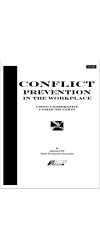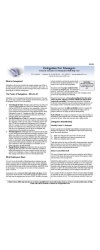In this major section you explain what you will produce and/or what you will sell, and you provide information about the market and your marketing strategies—past, present,
and future. Give details and be specific. While you don’t want to talk down to people who will be reading your business plan, you can’t assume that they will be familiar with your area of business.
DESCRIPTION OF PRODUCTS AND SERVICES
Describe your products and services here. Provide enough information for readers unfamiliar with your type of business to understand the value of what you can offer. If appropriate, include future products or services as well as what you offer currently, being careful to distinguish between what you provide at present and what products or services are in development. It’s also important to indicate the legal ownership and status of products and patents related to the products.
¦ Lock-picking devices are used by law enforcement and registered locksmiths.
¦ We produce a line of lock-picking devices made of stainless steel that can be used for both automotive and home emergency situations.
¦ We provide management consulting services to the top manufacturing companies in central Ohio, enabling them to streamline their manufacturing process.
¦ We make and deliver a wide range of designer pizzas to the area surrounding Fenway Park.
¦ Our lock-picking tools are patented by Yutakeum Limited and produced under exclusive license by our company.
¦ We design solid-state memory-based MP3 players that are both innovative and inexpensive and license them to manufacturers around the world.
¦ Our MP3 players are protected by worldwide patents. [Insert numbers and other details here.]
¦ Our legal services will focus on meeting the needs of corporations incorporated in the state of Delaware.
¦ Products will be distributed through our existing national distribution agreements with Hume-Gray Hardware and Wellie-Mart at over 700 retail outlets.
DESCRIBING YOUR TARGET MARKET
Your products or services may be great, but if nobody wants to buy what you’re offering, you’ll fail. In this section, outline your target customers, key features and competitive advantages, and your marketing direction and opportunities.
You can start by describing the size and demographics of the market, adding any other pertinent information (such as whether it’s underserved in your area).
¦ According to recent statistics compiled by the Boston Chamber of Commerce, 60 percent of small businesses plan on hiring a management consultant in the next five
years. (small business consultant)
¦ Our prime demographic—18- to 25-year-old males—buys an average of 2.6 Takeout pizzas each month. (pizza restaurant)
¦ Sidewalk traffic past our intended location exceeds 1,000 people per hour. (discount retail store)
¦ There are 20,000 homes in our business area, and, on average, each home Orders takeout food at least once a week. (pizza restaurant)
¦ Each year, 40 percent of small businesses in the state hire outside firms to assist them with human resource issues. (small business consultant)
¦ Online advertising is projected to increase by 10 percent each year for the next three years.(ad-supported online business)
Your Competitive Advantages
Next, cite the key features or competitive advantages of the products or services you’ll be offering. For almost every product or service you can imagine, there will be competitors that are in your area or that can service your area. You need to explain, to both yourself and your readers, how what you will be offering is better, faster, stronger, etc. In short, tell what separates your products and services from what competitors offer.
Outline your competitive advantages.
¦ Unlike other management consulting firms,we offer one stop solutions.
¦ We provide firm quotes to customers so they always know exactly what their product/service will cost, while other firms quote soft numbers or charge by the hour.
¦ We own our own production facilities, so we can control our production costs better than competitors, thus offering lower retail costs and/or higher profit margins.
¦ We have one of the best locations in the city for delivery pizza.
¦ Competitors license the rights to similar product lines at considerable extra cost, while we actually own the patents and do not pay royalties.
¦ Our Web site, which will generate significant sales, has been up for five years and has an established visitor base, unlike the sites of our competitors.
¦ Strategic pricing places our prices at 5 percent below the average price in the marketplace.
Marketing Directions and Opportunities
The next part of the market section is marketing directions and opportunities. State briefly how you will reach your target market and how you will create and maximize marketing opportunities.
¦ Product endorsements have been secured from prominent experts and will be featured in our print and online promotional materials and in media ads.
¦ Sales generated by our Web site marketing exceed $200,000 a year, a figure we expect to double in 2010 with only minimal additional marketing costs.
¦ Our marketing budget for the first year will be $10,000, allocated primarily to building our Internet presence and brand awareness.
¦ Second-year marketing will focus on taking advantage of media contacts in our industry, arranging for feature stories in the print media, and presenting at trade shows.
¦ CEO F. Kruger continues to do pro bono presentations and seminars, both locally and nationally, to increase brand and product awareness.
¦ Strategic marketing agreements are in place with several complementary companies to facilitate cross-marketing
and cross-referrals.





